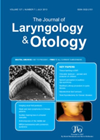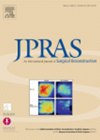
Journal Reviews archive for September 2014
Precautions to be taken in cosmetic facial surgery
In this comprehensive write-up on precautionary measures to be taken when doing cosmetic surgery on our patients, the authors begin by emphasising that facial plastic surgery is no longer limited to celebrities and the privileged. It has extended into everyday...
Medical information required with requests for CT scans of the temporal bones; a two cycle audit
It is a common experience that radiology reports on the CT scans of the temporal bones do not always reach a diagnosis. Various studies have produced differing results in that detailed information may not be necessary to help reach a...
A diagnostic survey of dizziness
The prevalence of self-reported dizziness and that requiring medical consultation is remarkably high. Cardiac and neuropathic comorbidities, often associated with these patients confuse the diagnosis. In this multicentre study, the prevalence and characteristics of various diagnostic groups, for example, Benign...
Post tonsillectomy recovery in thermal welding method compared with recovery in cold steel method
Many different methods for tonsillectomy have emerged but whether they provide an improvement over the traditional cold steel tonsillectomy is another matter. Thermal welding is a recent method of tonsillectomy in which the tissues are simultaneously coagulated and divided. In...
Facial paralysis risk factors in benign parotid surgery
The literature shows that the risk of facial paralysis following benign parotid surgery can be as high as 57% for temporary weakness and 7% for permanent facial nerve damage. It is generally thought that the factors involved may be related...
The need for pre-operative overnight pulse oximetry in children undergoing surgery for obstructive sleep apnoea syndrome
Snoring is a common occurrence in children listed for adenotonsillectomy. This may be associated with obstructive sleep apnoea syndrome, in which case the post-operative recovery of these children needs to be closely monitored. This study undertakes to assess whether an...
Assessment of viral aetiology in the formation of nasal polyps
The exact aetiology of nasal polyposis is not yet established although it is believed that allergic, infectious, mechanical, immunological and biochemical factors may be involved. Using the technique of polymerase chain reaction, this study assesses the role of human adenovirus,...
The use of Integra to allow early cover wounds
The authors present the use of Integra in a unique cohort of patients. Seven patients ages 21-31 in a six month period treated in one hospital. These were a very fit group of patients that had injuries caused by improvised...







